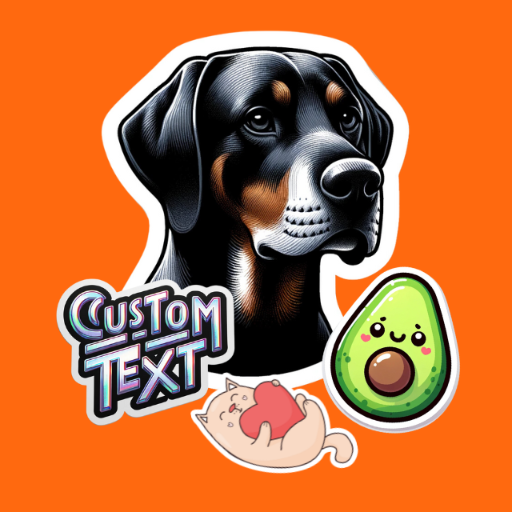Barcode maker-barcode generator for easy creation.
AI-powered barcode generation made simple.
Related Tools
Load MoreQR Code Creator & Customizer
Create a QR code in 30 seconds + add a cool design effect or overlay it on top of any image. Free, no watermarks, no email required, and we don't store your messages/images.

QR Code Maker & Scanner 🌟
🔥 Easily create and customize QR codes 🌈. Decode QR codes from images. 😄

Barcode Generator
🔥 Easily make and customize barcodes 🌈, all with simple English words. 🌟

QR Code Generator 💫
I'm here to help you create and customize QR codes efficiently!

LINEスタンプメーカー
イラストや写真からLINEスタンプを作成します!

Label Packaging Design (By Glancy3D.com)
Expert in creative packaging label design generation and 3D visualization.Let's create your winning design
20.0 / 5 (200 votes)
Introduction to Barcode Maker
Barcode Maker is designed as a tool to generate various types of barcodes that can be used across different industries for labeling, inventory management, retail, and other commercial purposes. Its primary purpose is to create machine-readable representations of data that can be easily scanned and interpreted by barcode readers. It supports different barcode formats like EAN-13, UPC-A, Code 39, and others, which are used globally in many industries. For instance, EAN-13 is widely used for product identification in retail, while Code 39 is often applied in industrial settings for asset tracking. A typical scenario might involve a small retail business looking to label its products with scannable barcodes. Using Barcode Maker, the business can generate EAN-13 codes that align with international standards, print them, and attach them to their products. Once scanned at the point of sale, these barcodes can trigger the inventory management system, automatically updating stock levels. Another example is a healthcare provider using Code 128 barcodes to track patient records, which can improve operational efficiency and minimize manual data entry errors.

Main Functions of Barcode Maker
Generate Multiple Barcode Formats
Example
The tool supports formats like EAN-13, UPC, Code 128, and ISBN. Each format serves different industries and needs. For instance, EAN-13 is used in retail for product barcodes, while ISBN barcodes are for books.
Scenario
A book publisher can use Barcode Maker to generate ISBN barcodes, ensuring their books are scannable in retail bookstores globally. Similarly, a retail chain might generate UPC-A barcodes for labeling their products.
Export Barcodes in Different File Formats
Example
Users can export barcodes in PNG, SVG, or even raw formats for high-resolution printing or embedding in digital documents.
Scenario
A company producing printed labels can export high-resolution PNG barcodes for integration into packaging designs, ensuring that barcodes remain crisp and easily readable even when printed in bulk.
Customization Options for Barcodes
Example
The tool allows customization, such as setting barcode size, font, or text alignment, enabling users to tailor their barcodes to fit specific design or layout requirements.
Scenario
A designer working on product packaging might want a smaller barcode to fit a tight space without compromising scanability. Barcode Maker allows them to adjust the size and format accordingly, ensuring it meets both aesthetic and functional needs.
Ideal Users of Barcode Maker
Small and Medium Retail Businesses
These businesses can benefit from the tool by generating barcodes for their products, streamlining sales, and inventory management. With Barcode Maker, they can create EAN-13 or UPC-A barcodes to ensure their products are compliant with retail standards and scannable at checkout.
Publishers and Authors
Publishers or independent authors who need to create ISBN barcodes for books can use the tool to generate these codes quickly. This is essential for selling books in physical stores or online, as it ensures that their products can be easily tracked and managed in sales systems.

How to Use Barcode Maker
Step 1
Visit aichatonline.org for a free trial without login, no need for ChatGPT Plus.
Step 2
Ensure you have Python installed on your system. Barcode Maker requires Python libraries like `barcode` and optionally `PIL` (for PNG output). Install these via pip if needed.
Step 3
Select the barcode type from options such as 'EAN13', 'code128', or 'ISBN'. This defines the format of your barcode.
Step 4
Generate the barcode by entering your unique number or code (e.g., product ID, ISBN). You can choose to save it in SVG or PNG format.
Step 5
Save the barcode file to your desired location or directly stream it into a file-like object for further customization and usage.
Try other advanced and practical GPTs
Video Maker
AI-powered video creation made easy

Boolean Logic Bruh
AI-powered Boolean Logic and Verilog Coding

Digital Logic Design Tutor
AI-powered tutor for digital logic design

Logic
AI-Powered Logic for Smart Solutions

Lingua Bridge
AI-powered Polish-English Translation

Image to HTML, CSS, and JavaScript Code Generator
AI-powered code generation from images

Story Maker
AI-Powered Story Creation

Custom Stickers GPT
AI-Powered Custom Sticker Creation

Article Outliner
AI-powered content structuring for writers.

Email Editor
AI-Powered Email Perfection

LaTeX Scribe
AI-driven transcription of handwritten LaTeX content

LaTeX assistant
AI-powered LaTeX enhancement made easy

- Inventory Management
- Product Packaging
- Book Publishing
- Retail Use
- Event Ticketing
Common Questions about Barcode Maker
What types of barcodes can I generate?
Barcode Maker supports various types including 'EAN13', 'code128', 'UPC', and 'ISBN'. You can select the appropriate format based on your application, like retail, publishing, or inventory management.
Can I save barcodes in image formats?
Yes, you can save the generated barcodes in SVG (for vector graphics) or PNG (for raster images) formats. PNG output requires the `PIL` library to be installed.
Is there a size limit for the barcode number?
The size depends on the barcode format you choose. For example, 'EAN13' requires a 13-digit code, while 'code128' is more flexible with alphanumeric characters.
Can I customize the appearance of the barcode?
Yes, using the `ImageWriter` class in the Python library, you can modify aspects like the width, height, and font size of the barcode before saving it.
What are the common use cases for Barcode Maker?
Common use cases include generating product barcodes for retail, ISBN codes for books, QR codes for event tickets, and barcodes for inventory tracking in warehouses.